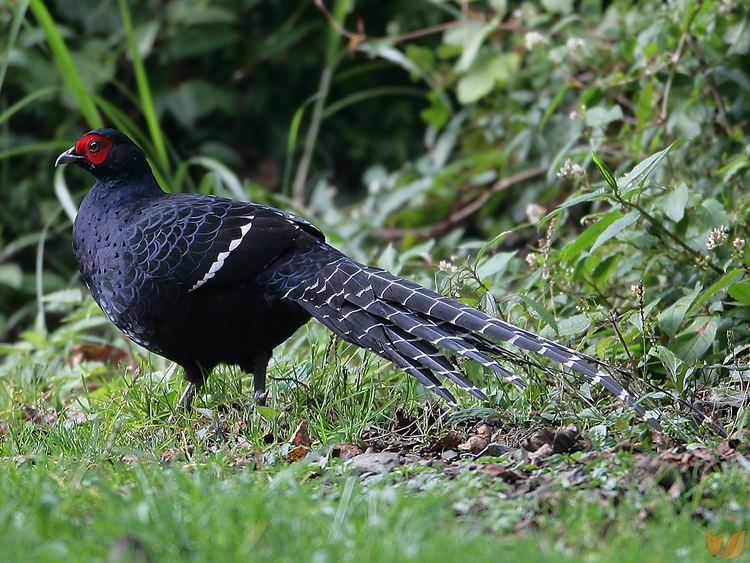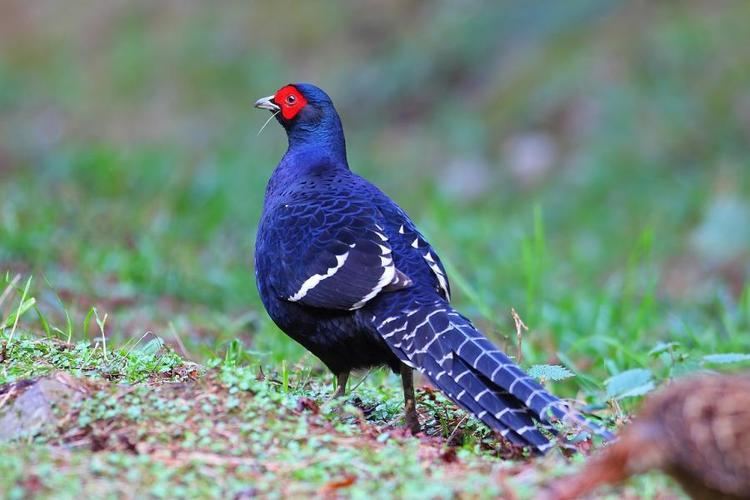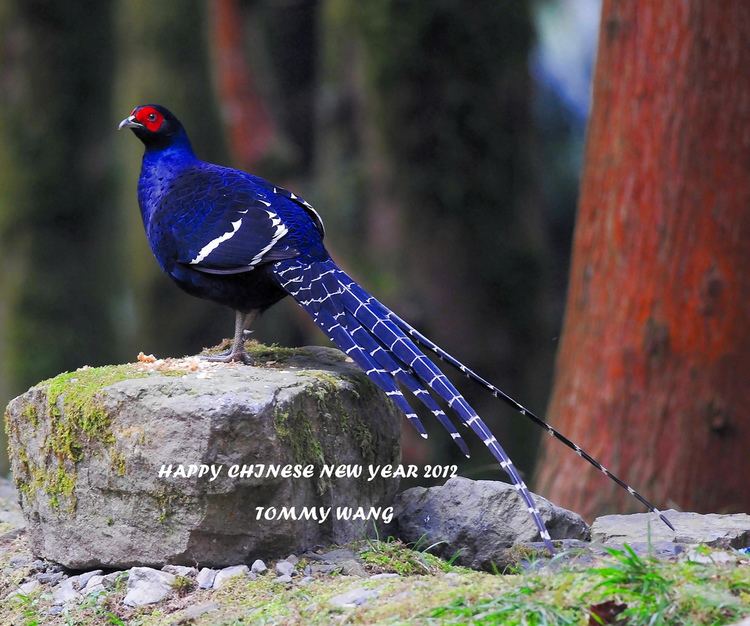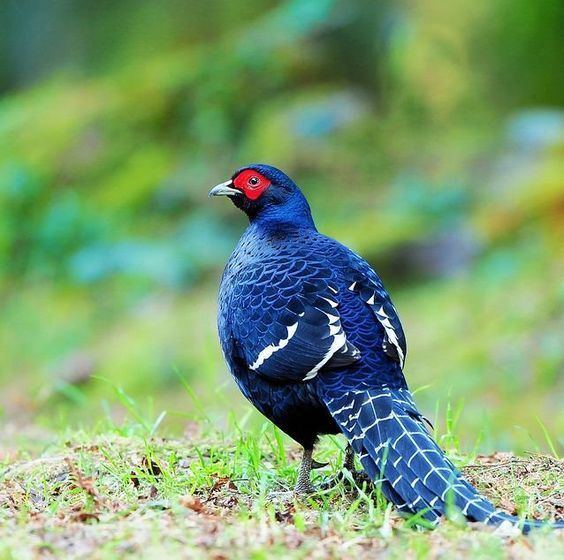Subfamily Phasianinae Higher classification Syrmaticus | Genus Syrmaticus Phylum Chordata Rank Species | |
 | ||
Similar Swinhoe's pheasant, Syrmaticus, Elliot's pheasant, Brown eared pheasant, Mrs Hume's pheasant | ||
Mikado pheasant
The Mikado pheasant (Syrmaticus mikado) is a gamebird in the pheasant family Phasianidae of the order Galliformes, gallinaceous birds. Sometimes considered an unofficial national bird of Taiwan (along with the Swinhoe's pheasant and Taiwan blue magpie), a pair of Mikado pheasants and Yushan National Park, one of the areas it is known to inhabit, is depicted in the 1000 dollar bill of the Taiwanese dollar.
Contents
- Mikado pheasant
- Distribution and habitat
- Description
- Behaviour
- Feeding
- Breeding
- Status and conservation
- References

Mikado pheasant
Distribution and habitat

The Mikado pheasant is endemic to mountainous regions of Taiwan. The species occupies dense shrubs, bamboo growth and grassy terrain with conifer overstory in central and southern Taiwan, from 2000 to 3200 meters above sea level.
Description

With the tail included, male of this species get to be up to 70 cm in body length, while the smaller females measure up to 47 cm. The male is dark with plumage that refracts with blue or violet iridescence, with white stripes on its wings and tail. The female is brown and specked with brown and white quills. The long and striped tail feathers of the male were used by the Taiwanese aborigines as a head-dress decoration. The type specimen of the pheasant comprises two such tail feathers obtained in 1906 by collector Walter Goodfellow from the head-dress of one of his porters. It was named in honour of the Emperor of Japan, of which Taiwan was occupied by. Its Chinese name, 帝雉 (dizhi) also translates to "Emperor Pheasant."
Behaviour

The pheasants will often come out into the open either in light rain or after heavy rain, where the mist conceals them. They tend to be solitary or found in pairs, often quiet, yet alert. They can usually tolerate the presence of humans and it is possible to observe them up close, especially in areas where they have become habituated to humans feeding them. When disturbed, they will slowly and cautiously seek out shelter within surrounding vegetation, rather than fluttering away in panic. If desperate, they will fly short distances, gliding down the mountainside. The males are territorial, with a range of 200–400 metres in radius. Both sexes make soft clucking sounds when feeding, and the males make ke, ke, ke calls when fighting for their mate or territory. Both sexes may perform a wing-whirring display, and during the breeding season the male performs a lateral running display with his body expanded and tail fanned.
Feeding

The pheasants will often walk and forage for food (a diet of various fruit, leaves, vegetation, seeds and invertebrates) at the same time, in a manner similar to chickens, on the forest floor and mountain trails, especially on rainy and foggy days.
Breeding

The breeding season of Mikado pheasants lasts from March to June. Mikado pheasants build their nests mainly with dead branches, fallen leaves, dry grass and feathers in tree holes or depressions under rocks. Females usually lay three to eight creamy-coloured eggs at one time and it is they who are solely responsible for the incubation of the eggs (which take about 26–28 days to hatch) and the nurture of fledglings, once they are born. The young are usually independent by six months the latest.
Status and conservation
There are some Mikado pheasants bred in captivity, but there are only about 10,000 individuals in the wild, particularly in the Yushan National Park. Heavy hunting pressure was a problem in the past, but is not a serious threat today. The Mikado pheasant is evaluated as near threatened on the IUCN Red List of Threatened Species. It is listed on Appendix I of CITES.
